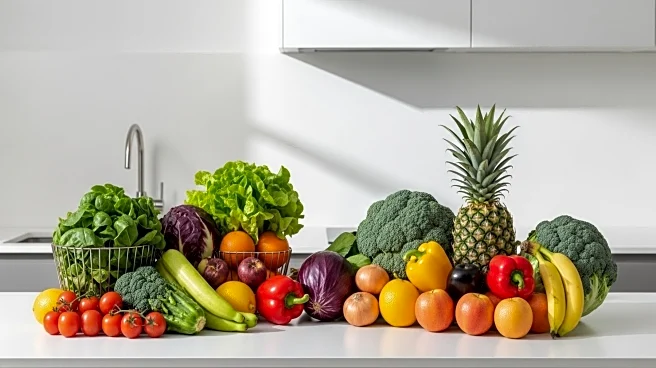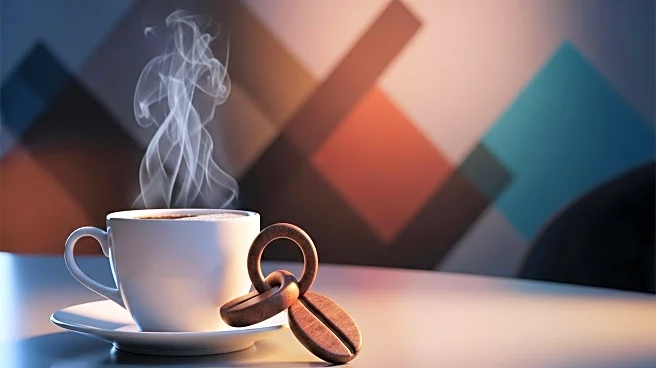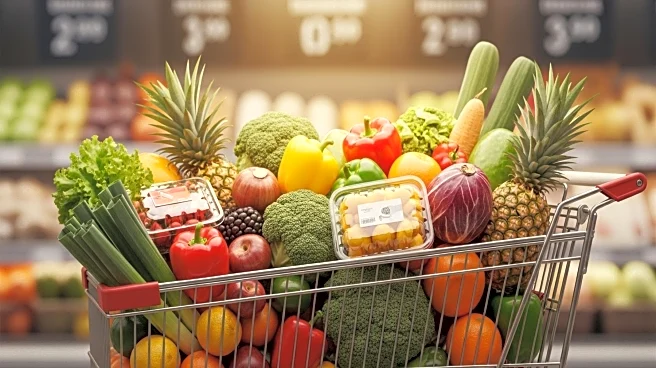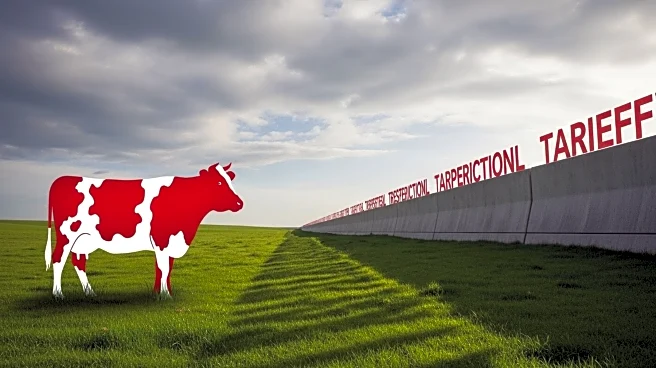What's Happening?
President Trump's administration has implemented policies that are contributing to rising grocery prices in the United States. These include tariffs on imported goods and a crackdown on immigration, which have affected food production and supply chains. Grocery prices increased by 0.6% in August, marking the fastest rise in three years, and are up 2.7% compared to the previous year. The tariffs have particularly impacted foods that rely on immigrant labor for production, such as fruits and vegetables, and those imported from other countries, like coffee and bananas. Coffee prices have surged by 20.9% this year, largely due to a 50% tariff on Brazilian imports. Additionally, the administration's immigration policies have led to a reduction in the agricultural workforce, further straining food production.
Why It's Important?
The increase in grocery prices is a significant concern for American consumers, especially low- and middle-income households who are most affected by these changes. Rising food costs are a major stress factor for more than half of Americans, influencing their shopping habits and overall economic perceptions. The tariffs and immigration policies are not only impacting consumer prices but also the agricultural industry, which relies heavily on immigrant labor. The reduction in the workforce has led to higher labor costs and unharvested crops, exacerbating the situation. These developments have political implications as well, with food prices becoming a key issue in voter decision-making.
What's Next?
If the current tariff levels persist, food prices are expected to rise by 3.4% in the short term and remain 2.5% higher in the long term, according to estimates from Yale University's Budget Lab. The Trump administration has promised trade deals that might include tariff exceptions, but the immediate impact on heavily imported foods remains significant. Additionally, looming cuts to the Supplemental Nutrition Assistance Program (SNAP) could further strain low-income households, potentially affecting millions of Americans who rely on these benefits.
Beyond the Headlines
The broader implications of these policies include potential long-term shifts in the agricultural industry and consumer behavior. The reduction in immigrant labor could deter investments in food supply chains, affecting future production capabilities. Climate change is also playing a role in rising food prices, with severe weather events impacting crop yields and livestock production. These factors combined could lead to a more polarized economy, where wealthier consumers continue to purchase premium products while lower-income households struggle to afford basic necessities.











